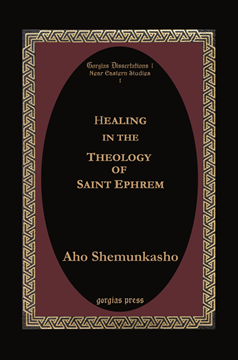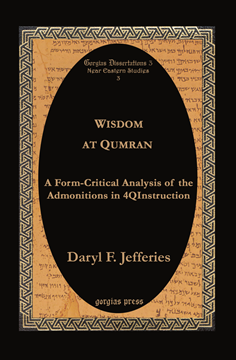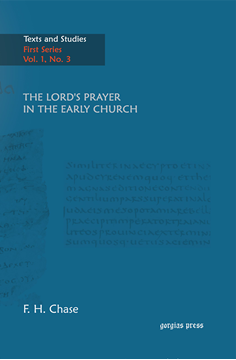Healing in the Theology of Saint Ephrem
ISBN: 1-59333-156-8
Ephrem, the most celebrated writer of the Syriac Church, presents a wide range of theological themes and images that are characteristic of fourth-century Syrian Christianity. A significant theme that no one has yet studied in Ephrem is the concept of sickness and healing. This book presents the significance of healing theology and the ways in which the healing of man - spiritually, mentally, and corporally - is highly valued by Ephrem. The main part of the book deals with the causes of spiritual sickness and the process of healing, and the way in which Ephrem places them in the divine history of salvation.
$207.00 (USD)
The Akītu Festival (hardback)
Religious Continuity and Royal Legitimation in Mesopotamia
Series: Gorgias Near Eastern Studies 2
ISBN: 1-59333-158-4
The akītu festival is one of the oldest recorded religious festivals in the world, celebrated for several millennia throughout ancient Mesopotamia. Yet, the akītu was more than just a religious ceremony; it acted as a political device to ensure the supremacy of the king, the national god, and his capital city. Using tools of social anthropology and ritual analysis, this book presents a detailed reconstruction of the festival events and its attendant rituals to demonstrate how the festival became a propagandistic tool wielded by the monarchy and ruling classes. The akītu festival demonstrates the effectiveness of religion as a political tool.
$124.00 (USD)
A Form-Critical Analysis of the Admonitions in 4QInstruction
Series: Gorgias Near Eastern Studies 3
ISBN: 1-59333-159-2
This study provides background on wisdom forms, the key Qumran sectarian texts, and wisdom studies related to the Dead Sea Scrolls. 4QInstruction includes poetic discourses, hymnic material, and short wisdom sayings and admonitions. A major focus is placed on the admonitions, which are discussed in terms of their structure, wisdom forms, and setting. The admonitions are expressed in biblical wisdom forms, showing a familiarity with and acceptance of traditional Hebrew wisdom, including a focus on traditional themes. Yet, when read from the sectarian perspective, 4QInstruction reinforces the guidelines and theology of the key Dead Sea Scroll documents.
$99.00 (USD)
Explorations in Bible Lands During the 19th Century
ISBN: 1-59333-116-9
This book is a historical sketch of archaeological explorations of the biblical lands of Assyria, Babylonia, Palestine, Egypt, Arabia and Hittite areas. It conceives the resurrection of the principal ancient nations of Western Asia and Egypt. Contains nearly 200 illustrations and four maps.
$144.00 (USD)
Monks and Monasteries of the Near East
By Jules Leroy
ISBN: 1-59333-276-9
Jules Leroy, the French art expert, spent several months touring the Near East in search of Early Christian remains. During this time he visited most of the monasteries in Egypt, Syria, the Lebanon, Palestine, and Iraq.
$96.00 (USD)
The Lord's Prayer in the Early Church
Series: Texts and Studies (First Series) Vol 1, No. 3
ISBN: 1-59333-275-0
The late Cambridge scholar F. H. Chase gives an insightful study on the Lord's prayer in the early Christian Church. The study first discusses the early Church and the Synagogue, then goes through an analytical study of every phrase of the prayer.
$132.00 (USD)





